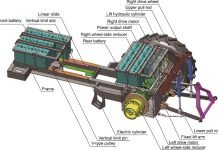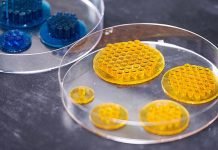
Imagine a world where we can produce energy without harming the environment.
Well, that dream is becoming a reality with the help of solar fuel production.
Scientists from China and the U.K. have discovered innovative ways to optimize the recipe for making solar fuels, like hydrogen, which can be produced from water using sunlight.
These findings have been published in two scientific journals, and they hold great promise in tackling the climate crisis.
Let’s explore how these scientists are cooking up a brighter future.
Just like a superb meal requires the right ingredients prepared expertly, the production of better green fuel alternatives requires combining the right materials and methods.
One of the most important ingredients in this recipe is a substance called a semiconductor photocatalyst. This substance absorbs sunlight and uses its energy to break water into hydrogen and oxygen—a process known as “water splitting.”
However, not all photocatalysts are equally efficient. That’s where the researchers stepped in.
By experimenting with different materials and techniques, they found ways to improve the efficiency of hydrogen production. Dr. Graham Dawson, the lead researcher from Xi’an Jiaotong-Liverpool University, explains that by adding materials like gold or boron nitride to the photocatalysts using specific mixing methods, they can increase the amount of sunlight absorbed.
One commonly used photocatalyst is titanium dioxide, which can harness solar energy directly and shows great potential for solar-related technologies.
However, it has a limitation—it can only absorb UV light, which represents just 7% of sunlight.
To overcome this, the researchers added boron nitride to titanium dioxide, creating a composite photocatalyst that can absorb light from a wider range of wavelengths, including visible light. This breakthrough allows the photocatalyst to utilize more of the sun’s energy and produce more hydrogen.
In their second study, the researchers explored another method to improve photocatalytic efficiency. They coated certain types of photocatalytic structures with tiny particles of gold. This coating increased the amount of light these structures could absorb.
The team found that nanosheets modified with small, uniform gold particles showed the best performance, producing approximately 36 times more hydrogen than unmodified nanotubes. This discovery opens up exciting possibilities for enhancing solar cells, optical sensors, and hydrogen production.
With their groundbreaking research, these scientists are paving the way for a cleaner and greener future.
By optimizing the recipe for solar fuel production, they have found ways to increase efficiency and harness more sunlight to produce hydrogen, a zero-emission energy source. These advancements offer hope in mitigating the climate crisis and shifting towards sustainable energy solutions.
The sun’s power is vast, and thanks to these innovative recipes, we are one step closer to unlocking its full potential.
The findings have been published in two articles, one in the journal Applied Surface Science, and the other in Optical Materials.




